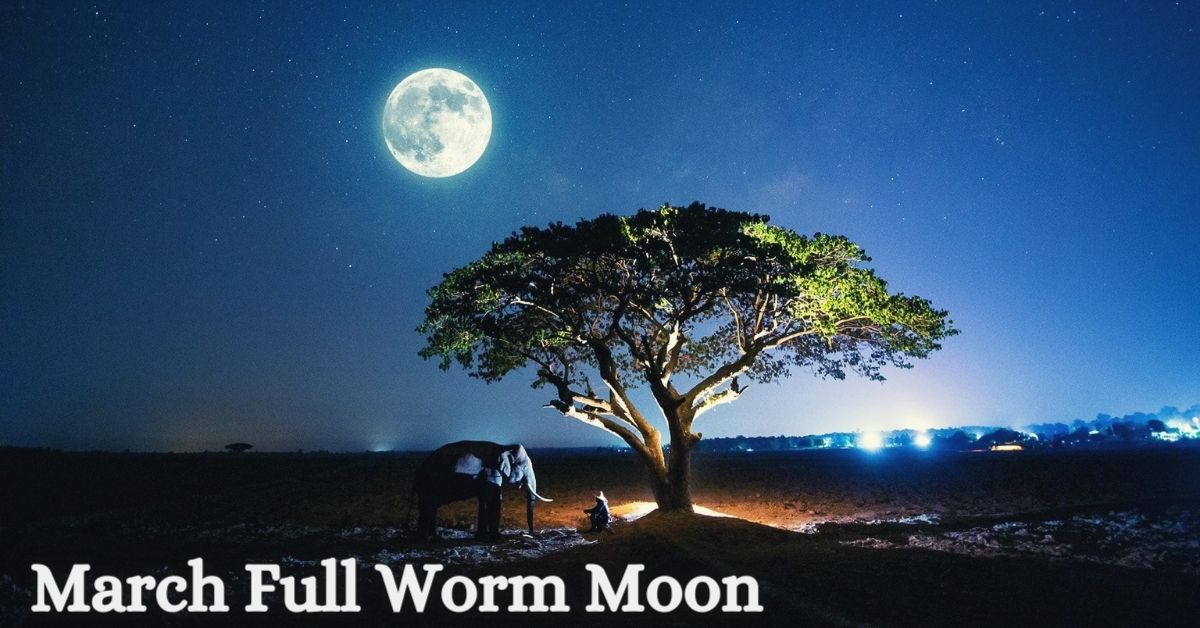This week, skywatchers will get a treat in the form of the last full moon of winter, which also happens to coincide with a rare event.
According to the Old Farmer’s Almanac, the full moon in March will occur around 7:42 a.m. ET on Tuesday, March 7. The March moon was given the name “worm moon” by Native American tribes in the 18th century in reference to various critters emerging from their winter hideaways to welcome spring. Then again, a lucky observer of the heavens might witness a spectacular planetary occurrence.
March Full Worm Moon
What’s more fascinating now, according to American Meteor Society operations manager Mike Hankey via email, is that Venus and Jupiter are in such a near and prominent position in the western sky immediately after sunset. “This phenomenon is known in astronomy as a conjunction. As the moon rises at the same time these planets set, you can only see them for a brief window of time in the west before nightfall.
If it rains on Monday or Tuesday night, those who stay up late enough may be treated to the rare sight of a moonbow, which is similar to a solar rainbow but is created by the moonlight being refracted through water droplets in the air. The best time to see a moonbow is after sunset when the sky is dark and the moon is at its lowest point in the sky.
You still have time to witness a rare celestial phenomenon after the worm moon. Take note of this year’s full moons, eclipses, and meteor showers.
It’s a full moon and supermoon time! In 2023, there will be 13 full moons instead of the usual 12, with two supermoons occurring in August. It’s easier to spot a supermoon since it’s bigger and brighter than usual because it’s closer to Earth.
According to the Old Farmer’s Almanac, the following are the remaining full moons in the year 2023:
- April 6: Pink moon
- May 5: Flower moon
- June 3: Strawberry moon
- July 3: Buck moon
- August 1: Sturgeon moon
- August 30: Blue moon
- September 29: Harvest moon
- October 28: Hunter’s moon
- November 27: Beaver moon
- December 26: Cold moon
You can also check out the below article have provided:
Eclipses, Both of the Moon and of the Sun
In 2023, there will be four total eclipses: two of the sun, and two of the moon. On April 20th, residents in Australia, Southeast Asia, and Antarctica will be able to witness a total solar eclipse, which occurs when the moon passes directly in front of the sun.
North, Central, and South America will be able to witness a solar annular eclipse on October 14. When the moon is at or near its farthest point from Earth, it will pass between the sun and Earth, generating a luminous ring around the moon and making the moon appear smaller than the sun.
Use eclipse glasses when viewing a solar eclipse to protect your eyes from the intense light. On May 5, people in Africa, Asia, and Australia will witness a penumbral lunar eclipse, which occurs when the moon passes through the penumbra, the dim outer section of Earth’s shadow.
On October 28, people in Europe, Asia, Australia, Africa, parts of North America, and much of South America will be able to see a partial lunar eclipse. This occurs when the moon, Earth, and sun aren’t perfectly aligned, casting a partial shadow on the lunar surface.
Comet Showers
You still have time this year to catch eleven more meteor showers, all of which peak between midnight and sunrise in dark, unpopulated locations.
You can see when they’re at their best below:
- Lyrids: April 22-23
- Eta Aquariids: May 5-6
- Southern Delta Aquariids: July 30-31
- Alpha Capricornids: July 30-31
- Perseids: August 12-13
- Orionids: October 20-21
- Southern Taurids: November 4-5
- Northern Taurids: November 11-12
- Leonids: November 17-18
- Geminids: December 13-14
- Ursids: December 21-22
The information you need to know about the full worm Moon in March has been supplied. We’ve also included details about when the solar and lunar eclipses will occur. Join us on Twitter for more information.
